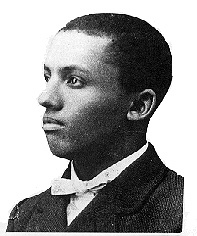"The Father of Black History" Found his Passion in the New River Gorge
As we prepare to commemorate a motivational speaker and leader on Martin Luther King Jr. Day, people around the world will gather to embrace his vision of the world house, a place where people have solved the global problems of poverty, racism, war and violence by bringing together the unity of all faiths and truths. This dream, brought about by the Civil Rights Movement of the 1960s, was not only to improve the social tensions of the United States but to improve it through nonviolent activism. 
In order to achieve political and social change without the means of violence, some activists chose to record and detail the social aspects of African Americans living in the United States. One of those activists was Dr. Carter G. Woodson (1875-1950), the “Father of Black History.”
Inspiration Came from West Virginia
Although his time was before the Civil Rights Movement, he raised early awareness about how African Americans were treated, and also how they have affected the development of social, political and economic structures of the United States. Most of his inspiration for documenting black history came from his time in the New River Gorge coalfields.
“In this circle the history of the race was discussed frequently and my interest in penetrating the past of my people was deepened and intensified.”
Like many other African Americans of his time, Woodson came to West Virginia’s Fayette County to work in the booming mining industry in 1892.
While working at mining sites like Kaymoor and Nuttallburg, he was grouped with fellow black miners who shared their life stories with him. In his reflection, he tried to document the struggles and contributions of his fellow black miners and the African American people.
Coal Miner to the “Father of Black History”
He gathered speeches, folklore, autobiographies, letters and public records to put into his work. He pioneered chronicling the social history of black people during a time when African Americans were not seen as worthy of historical study by a majority of white scholars. Woodson’s first published piece, called the Journal of Negro History (1916), was one of many released between 1915 and 1947. His other works include:
- Four Published Monographs
- Five Textbooks
- Five Edited Collections of Documents
- Five Sociological Studies
- Thirteen Articles
Among the best of his works is the Mis-Education of the Negro (1933), which details how African Americans were being indoctrinated rather than taught in public schools. This title is considered to be a classic, and makes many points that are still considered relevant to today’s African American community.
You can still visit Nuttalburg and Kaymoor where Woodson mined in the gorge. Have you been to either of these abandoned mine towns?